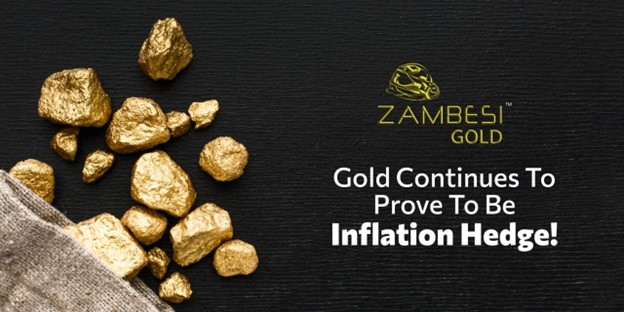Across multiple economic downturns and bear markets, gold has proven to be a haven for investors worldwide, with many traders and investors opting to invest in it to protect their capital against value depreciation, which occurs from inflation, causing an increase in general prices.
Because gold prices are related to the US dollar value due to gold being dollar-denominated, a stronger USD keeps the price of gold down and more controlled. A weaker USD drives the gold price higher due to increasing demand. Ultimately this means that more gold can be purchased when the dollar is more vulnerable, protecting investors against economic events like currency devaluation and providing a safety net during periods of political instability.
Gold gained popularity for its ability to be an inflation hedge when governments attempted to protect their economies, like in 1879 when the US introduced a gold standard that began backing the US dollar with actual gold to combat inflation, and in 1971 when President Nixon decided to end the gold standard to gain better control over gold-to-dollar conversions and improve inflation.
While the asset has become a go-to for many investors who wish to hedge against inflation due to its apparent low risk of price crashes, one study from Duke University found that the asset class was most successful at combating inflation when invested for periods of over a century. It found that shorter-term investments had more significant fluctuations that did not guarantee gains for investors.
Despite its utility, investors should be aware that many gold mining companies are unsuccessful due to high overhead costs, debt, finance, lack of control over commodity prices and non-compliance. Investors looking to get into gold-backed cryptocurrencies sometimes fail because they cannot create commercial value nor maintain it.
One company trying to provide a solution for this problem is Zambesi Gold, a thriving business that aims to lead the transition in mining assets becoming fully backed digital assets. Self-described in its whitepaper as being “backed by real gold, real people, and real mining operations combined with real value,” the company believes that current issues in gold investing exist due to companies having “a lack of a business plan which leads to less interest and productivity.”
To solve these problems, an agreement between the Zambesi Token and its investors ensures that no fractional lending will occur. “The number of tokens will be fixed, preventing inflation; therefore, a token’s value will increase irrespective of the demand for the token or of the gold price, and the amount of gold backing for each token will increase each month.”
The company believes that each asset should contribute to the profitability of a business and not subsidize other assets to reduce the cost of debt. It does this by allowing token holders to be the beneficiaries of the Gold Custodian Trust. In this vault, physical bullion gets stored.
“The Zambesi Gold standard is a monetary system backed by the value of physical gold, with the project’s token, just like gold, being perfectly divisible, with historical and inherent value projected for the future.” By implementing this structure, Zambesi token holders are guaranteed that their investment in gold will always increase in quantity and value.
In today’s bear market, investors are constantly looking for ways to hedge their portfolios against inflation. While gold has been proven to be a haven for investors, it is still not without risk, and many investments can take long periods to provide gains. However, newcomers like Zambesi Gold are disrupting this space, allowing investors an even safer and more secure way to invest in gold using cryptocurrency. To learn more about this exciting new project, head to Zambesi Gold’s website today.




